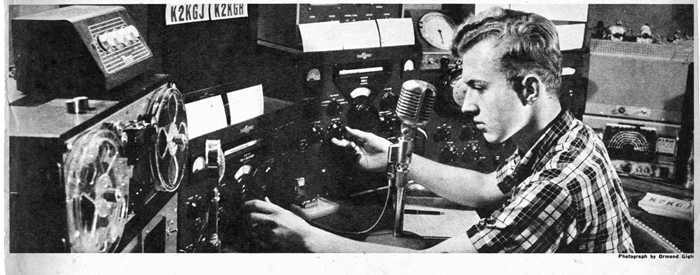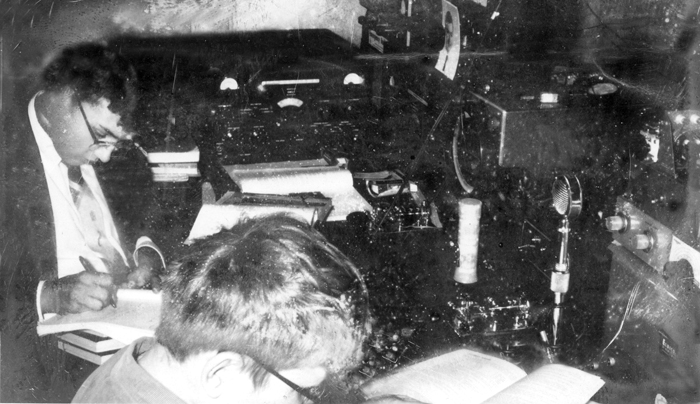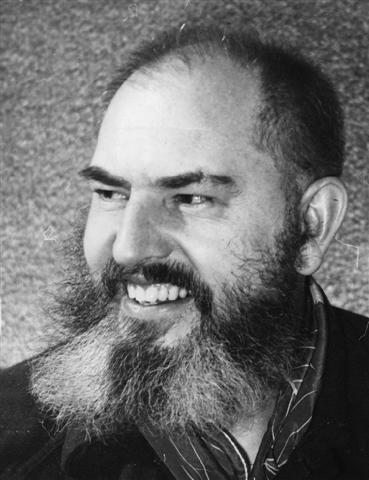|
Page 2/3 - Posted January 30, 2009
In touch with fameThe list of people who Jules patched through in those days is a virtual list of Who’s Who of Antarctic history. The notables include figures like Paul Siple, the scientific leader at South Pole in 1957 whose first trip to Antarctica was as a member of Admiral Byrd’s 1928 expedition. Scientist Carl Eklund at Wilkes Station, whose name would become attached to the forerunner of today’s Crary Lab, was another. Capt. Finn Ronne, the military and scientific leader of Ellsworth Station, for whom the Ronne Ice Shelf is named, also talked to Jules, as did Vivian Fuchs, who teamed with Edmund Hillary in the first trans-Antarctic expedition, from Shackleton Station on the Weddell Sea to Scott Base, via South Pole. There were other famous people who were eager to talk to the men in Antarctica, the vast unknown frontier. Arthur Godfrey and Art Linkletter made a point of talking to the heroes of the era, after which they would proudly announce this communiqué on their radio shows. Meant a lot to moraleAccording to Dian Belanger’s definitive history “Deep Freeze: The United States, the International Geophysical Year, and the Origins of Antarctica’s Age of Science” when Deep Freeze personnel were asked to name people deserving recognition, the overwhelming majority began their lists with ham radio operators. Jules’ name appeared on everyone’s lists. The radio operators received certificates of appreciation for their support of polar morale, but Jules’ efforts were so extraordinary he got a geographical feature named for him. 
Photo Credit: Ormond Gigli
This photo of Jules Madey with his ham radio appeared in the American Weekly supplement to the Cleveland Plain Dealer, December 8, 1957.
Vic Young spent the winter of 1956 at Little America V running the ham shack during the evening hours. When recently contacted to see if he remembered Jules, an enthusiastic burst of energy came through the phone. “Jules? Jules Madey? Sure I remember Jules. He was terrific. Almost every time I’d be on the radio, I’d contact Jules. I remember he was a young man going to school. It would be 2 or 3 a.m. in New Jersey where he was and he’d be up doing his homework and patching through phone calls for us. I cannot say with enough emphasis what a great kid he was. “The men would come into the ham shack to talk to their wives. They’d be a bit down because here it was cold and dark, and they’d come into the shack and I’d put them through to Jules. I’d watch the person change from morose to his morale going way up as soon as he heard Jules’ voice, putting through the phone patch. I do not think Jules could possibly understand at his young age how important he was to us. He did a wonderful wonderful job.” Meeting the Madey brothersSeveral of the men made a point to visit Jules when they returned to the United States. Ken Waldron was one of the 18 men who spent the first winter at South Pole in 1957. He first heard of Jules before he deployed, while still stationed in Davisville, R.I. “I didn’t know who Jules was, but his name stuck in my mind because I figured he was someone pretty important. Then when I got to Pole, I found out that Jules was this wiz kid who patched through our phone calls. “You know, the thing that I remember best is that Jules would get the Sunday paper and read the comics and the sports pages to us over the radio. He was precocious enough to realize how important it was for us. Can you imagine being 16 years old and understanding the psychological impact of hearing the news like that? “Gee, when I was that age all I thought about was football and girls. Here these two boys would do their homework, get straight As, stay up all night to patch through phone calls for us and then go to school the next day. What they were accomplishing would take a project manager today.” Jules made such an impression on Waldron that he visited the Madey family when he returned home. “One day Jules and John and their group of friends took me out to eat lunch and I was blown away by this group of friends. They were the most intelligent and polite high school kids. I remember one young lady was so intelligent I had difficulty following what she was talking about. Here I was 21 and I thought these kids were already several steps ahead of me.” Waldron asked the boys’ dad how much he was involved in helping them get the radio and antenna set up. The Madey patriarch said that the boys figured out what they needed, he bought the equipment, and they did the rest. “Their dad said everything they have, they figured out on their own,” Waldron marvels. Another Deep Freeze II Polie, Earl Johnson, has another story about Jules. “I had just finished talking to my fiancée, Celeste, and had signed off. Jules was a long time coming back to me, and I thought that the band had gone out. However, the band was OK and when Jules came back on he told me he had been discussing with Celeste about the possibility of him attending our wedding, upon my return to the States. “Celeste and I were honored that a young man whom we had never met, but who had handled all our phone calls for the past year, would want to do that. Jules and his father flew down to West Palm Beach, Florida, for the wedding. We had the opportunity to visit with Jules again a couple of months later when passing through New Jersey.”Back 1 2 3 Next |
"News about the USAP, the Ice, and the People"



For USAP Participants |
For The Public |
For Researchers and EducatorsContact UsU.S. National Science FoundationOffice of Polar Programs Geosciences Directorate 2415 Eisenhower Avenue, Suite W7100 Alexandria, VA 22314 Sign up for the NSF Office of Polar Programs newsletter and events. Feedback Form |



